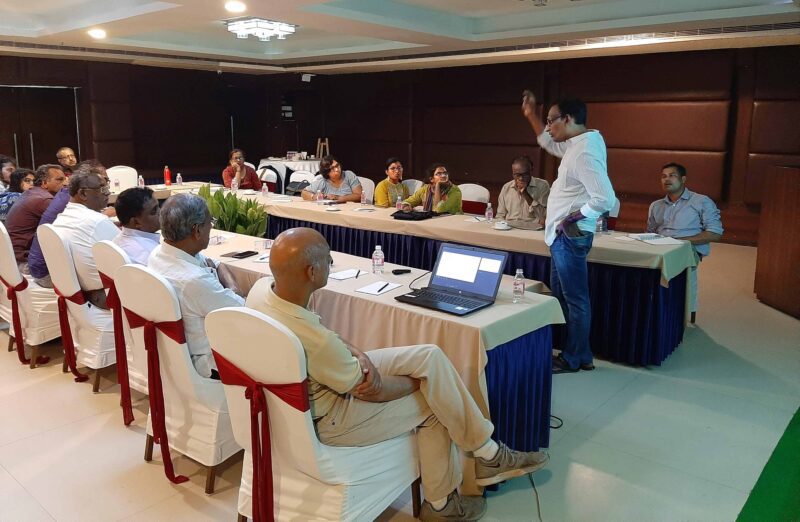A few earthmovers crawl over a large span of flat ground without a blade of grass on it, separated from the road by a creek with mangroves. The ground is being levelled, says our guide, then it will be marked into plots for distribution to poor people at a subsidized rate under the Prime Minister’s housing scheme. The effort sounds positive until the guide explains that the entire area was a small mangrove forest until a few months ago.
“I asked the district authorities why they were cutting down the mangroves,” says the guide, a senior journalist at the English-daily Deccan Chronicle based in Kakinada, a bustling port city in Andhra Pradesh on India’s Bay of Bengal coast.
“They said it was the most convenient place. I asked if they knew the effects of cutting the mangroves down, how the coast will become more vulnerable to damage from the many cyclones that happen here. They looked blank. Then they pointed to other people who had cut another patch of mangroves decades ago.”
This interaction reconfirmed the importance of getting journalists out of their offices and conference rooms to see firsthand what’s happening on the ground – a strategy adopted in all the media workshops carried out as part of the’ Earth Journalism Network’s Bay of Bengal project.
Now in its third year, the project – being carried out with support from the Climate Justice Resilience Fund – aims to enhance the ability of coastal populations in Bangladesh and eastern India to cope with climate change impacts. The obvious way to do this is to bring together interested journalists with communities and experts in the coastal regions.
The explanation about the felled mangroves also underscored the importance of asking journalists in the area to share their experiences with their peers. Before that, however, the participants at the Kakinada media workshop heard from experts, to put in perspective what they would later see on the ground.
They heard about the other reason for mangrove loss in the delta of the Godavari River, which joins the Bay of Bengal near Kakinada: The large number of dams that allow very little fresh water to reach the sea.
And they heard about what the women of the fisher families are doing to improve their resilience to the impacts of climate change – stepping up to manage the family finances as the men migrate in search of other work; saving as much money as they can to ensure a good education for their children; adding value to their catch to get a better price, such as smoking the prawns before sending them to market.
The information gathered during those discussions in the conference room was strengthened during the trip to the field, while also giving visiting journalists a good idea of how difficult life is for the local communities.
In all the villages along the coast, women queue up to fill buckets and pots with water that has been piped in from more than five kilometres away. They’ve turned to this supply because the local water has turned too salty to drink or use for cooking, but it lasts just 30 minutes a day, and they must make do with it.
The COVID-19 pandemic has arrived on top of this supply challenge, and most local women know about the importance of washing hands with soap and water every 30 minutes. But is there enough water for that? No, there isn’t, says Chinamma of Subbammapeta village on the outskirts of Kakinada.
“But we can use sea water to wash hands. Today I’ve asked my husband to buy another small bucket for that purpose.”
The media workshop in Kakinada took place March 12-13 and included nine reporters from a range of publications and backgrounds. We’ll post any stories produced as a result of their participation on our website as they become available.
